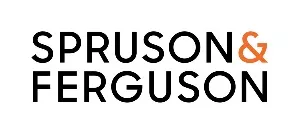- in China
- within Privacy topic(s)
- with Senior Company Executives, HR and Finance and Tax Executives
- with readers working within the Banking & Credit, Healthcare and Technology industries
On 30 April 2025, the China National Intellectual Property Administration (CNIPA) released a Draft Amendments to Patent Examination Guidelines (for Public Comments). The proposed amendments provide further clarification on certain legal aspects concerning patent applications involving Artificial Intelligence (AI) and Bitstream.
Further to our first article on the draft amendments, below is a summary of the key aspects, along with some illustrative examples.
Further clarification on inventorship
Only natural persons may be recognised as inventors. This provision underscores the legal requirement that inventor status is strictly limited to individuals, excluding AI or entities.
Inventions involving AI
- Examination of content violating the law, social morality, or harming public interest
A patent application containing algorithmic features—such as data collection, label management, rule setting, recommendation decisions—cannot be granted patent rights if it:
- contains elements that violate the law
- contravene fairness and justice, or
- involve discrimination and bias.
Example: Collecting facial information and identity details of customers without their consent or developing algorithms that violate the ethical principle of equality would be ineligible for patent protection.
- Full disclosure of the description and examination thereof
- For a patent application involving the construction or training of AI models, the description must clearly record the necessary modules, hierarchies, or connection relationships of the models, as well as the specific steps and parameters required for training, etc.
- For a patent application of applying AI models or algorithms to specific fields or scenarios, the specification must clearly describe how to integrate the AI model or algorithm with the specific field or scenarios, how to set the input and output data of the algorithm or AI model to indicate their internal association, etc. The disclosure shall enable those skilled in the art to implement the technical solution of the patent application.
Example 1: A method for generating facial features, where a spatial transformer network (STN) can be set in the first convolutional neural network (CNN) to determine the feature area of the facial image.
Although the specific setting position of the STN in the first CNN is not clearly recorded in the description, those skilled in the art would know that the STN can be inserted into any position in the first CNN without affecting its ability to identify the feature area of the image. Therefore, the technical solution sought for protection by Example 1 is fully disclosed in the description.
Example 2: A method for predicting cancer based on bioinformatics, utilising a trained enhanced screening model for malignant tumors, and using the blood routine, blood biochemical detection indicators, and facial image features as inputs to the screening model, so as to obtain a prediction value for malignant tumors.
The technical problem to be solved by Example 2 is how to improve the accuracy of malignant tumor prediction. However, its description does not record which indicators in the biochemical detection items are key indicators related to the accuracy of tumor prediction, nor does it explain the relationship between facial features and tumors.
The description of Example 2 fails to provide implementation details or data that would convince those skilled in the art and fails to provide the necessary expression of the association relationship. As a result, those skilled in the art cannot determine how to select indicators, how to use facial features, etc. On such basis, Example 2 does not meet the requirements of full disclosure.
- Further clarification of the criteria for assessing inventiveness
The inventiveness of an invention is evaluated based on the technical solution defined in the claims as a whole. The contribution of algorithmic features that are mutually supportive and interactive with the technical features should be considered in relation to the technical solution.
Example 3: A method for establishing a neural network model for scrap steel grading. The closest reference has disclosed extracting features by using the scrap steel image data of certain types to and conducting the model training.
In Example 3, the design and the settings of the convolution layer and the pooling layer have been adjusted during the model training process, thereby solving the technical problem of improving the accuracy of scrap steel grade classification. Consequently, Example 3 is considered to possess inventiveness.
Example 4: A method for identifying the number of ships.
The difference between Example 4 and the closest reference lies only in the positional relationships in the identification objects. The claims of Example 4 fail reflect the adjustment or change of the training method, model levels, etc. during deep learning and model training due to the difference in the identification objects. Given this, the method defined in the claims cannot render Example 4 inventive.
Inventions involving bitstreams
- Eligibility of subject matters
- Claims covering only a simple bitstream are not patentable.
If the subject matter of a claim only involves a simple bitstream or if the entire contents of a claim except its subject matter only involve a simple bitstream, such a claim is not patentable.
- Methods for generating, storing, or transmitting bitstreams (e.g., in video encoding/decoding) are patentable, as are related storage media.
In the technical field of digital video encoding/decoding, if a specific video encoding/decoding method for generating a bitstream constitutes a technical solution, the method for storing or transmitting the bitstream, as well as the computer-readable storage medium for storing the bitstream defined by the specific video encoding/decoding method, are considered patentable subject matter.
- Drafting requirement
- Claims may be drafted as a method, device, and/or storage medium.
A patent application involving a bitstream generated by a specific video encoding/decoding method can be drafted as a method claim, a device claim and/or a computer-readable storage medium claim.
- The description must fully disclose the encoding/decoding method to ensure reproducibility.
For a patent application involving a bitstream generated by a specific video encoding/decoding method, a clear and complete description of the specific video encoding/decoding method is required to ensure that it can be implemented by those skilled in the art.
- If claiming bitstream storage/transmission, the description must support these aspects.
If the subject matter to be protected involves the method for storing or transmitting the bitstream and/or the computer-readable storage medium for storing the bitstream, the description shall also record the same so as to support the claims.
The content of this article is intended to provide a general guide to the subject matter. Specialist advice should be sought about your specific circumstances.



